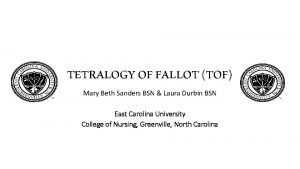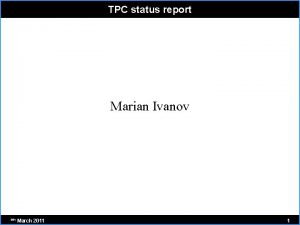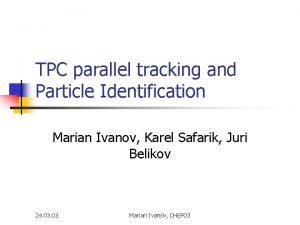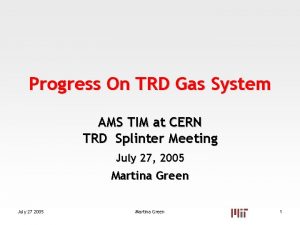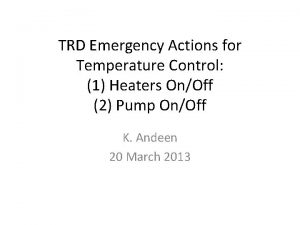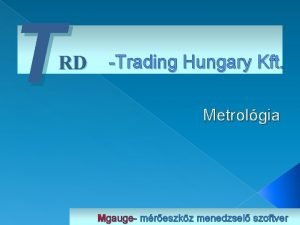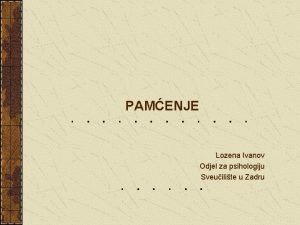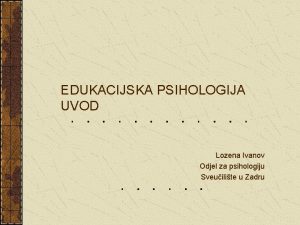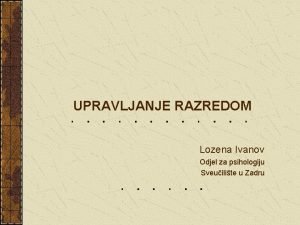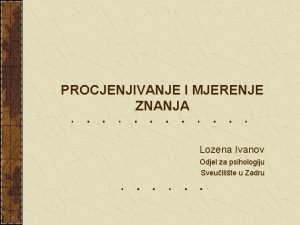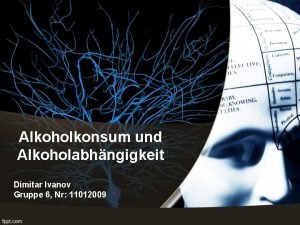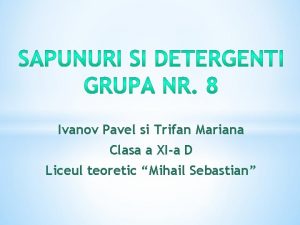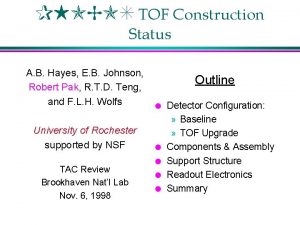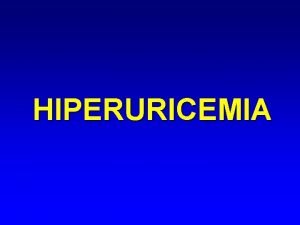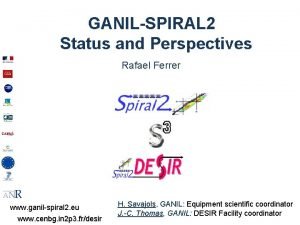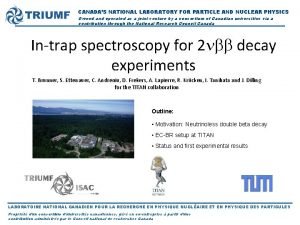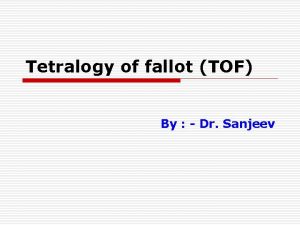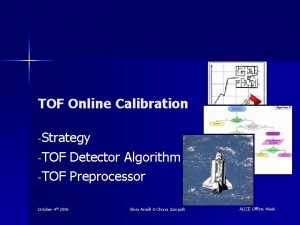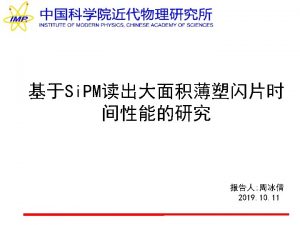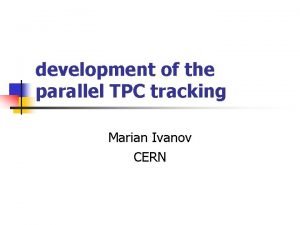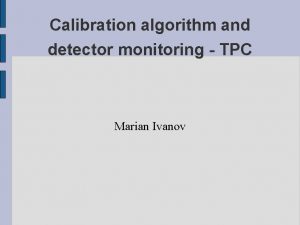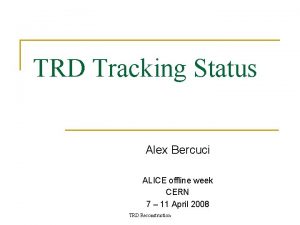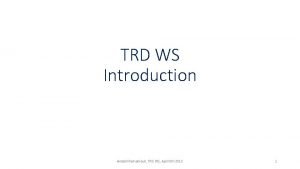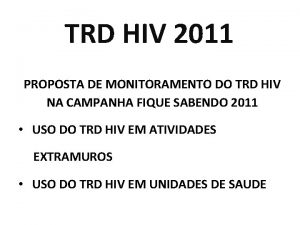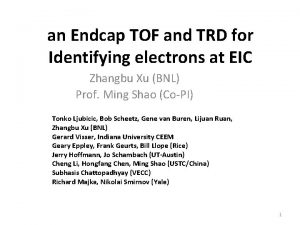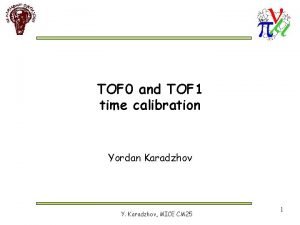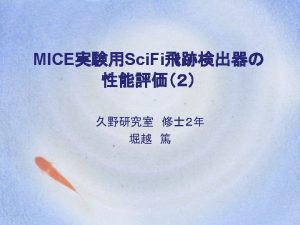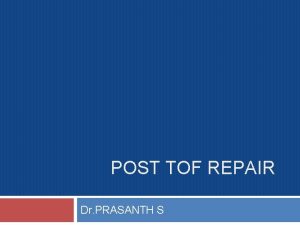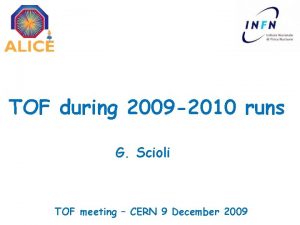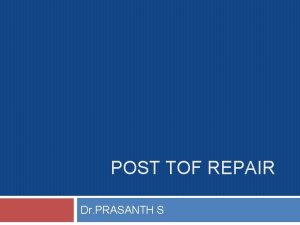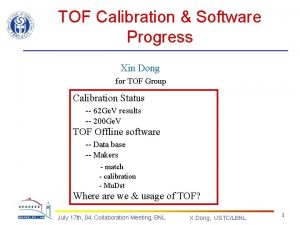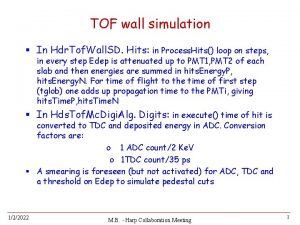New TRD TOF tracking algorithm Marian Ivanov Alice


























- Slides: 26

New TRD (&TOF) tracking algorithm Marian Ivanov, Alice Offline week 23. 02. 2005

TRD tracking changes - improvements 1)Cluster search mechanism replaced with tracklet search mechanism 1)Chi 2 minimization for full tracklet not for separate clusters 2)Advantage in high flux enviroment 2)New cluster error parameterization 3)Alignment using reconstructed tracklets 4)Kalman filter (Important for low momenta tracks): 1)Energy loss fluctuations taken to the account (covariance) 2)Increasing of the multiple scattering coefficient 5)Ongoing work on improvement for low momenta tracks – important for TOF matching

New cluster tracklet search mechanism Previous version: – Cluster with minimal chi 2 to predicted track position taken – Problem Track possition uncertainty comparable with mean distance between clusters – Possibility to take non proper cluster

New cluster tracklet search mechanism (0) New version – Looking for tracklets (set of clusters at given plane) with minimal chi 2 Tracklet position and angle taken to the account Minimize the number of changes in pad-rows – Maximum 1 change possible (tan(theta)*3 cm<padlength) – Problem: too many clusters in the road Tree building too slow – Sollution – Iterative search

New cluster tracklet search mechanism (1) Iterative search: – 1 approximation - closest clusters to the track taken –{ Tracklet position, angle and their uncertainty calculated Weighted mean position calculated (tracklet+ track) If chi 2 of current tracklet smaller than chi 2 of best previous and the number of pad-row changes less or equal of best previus – make current tracklet best Closest clusters to the weighted mean taken – }

New cluster tracklet search mechanism - r-phi direction(2)

New cluster tracklet search mechanism - z direction(3)

Cluster error parameterization Base cluster position fluctuation – Estimated using RMS of tracklet clusters residuals – Sigmay 2 = RMS Uncertainty corresponding to collective shifts of tracklet added to all clusters – Correction for unisochronity and width of the Time Response Function – Sigmay 2 += (sigma(dt)*tan(phi))^2*N(cluster) Additional penalty factor for mean number of pads per cluster and number of pad-rows changes – Effective correction for unfolding

Cluster error parameterization Left column - cluster residuals to the track-let interpolation Right column – track-let residuals to the Kalman track extrapolation

Pulls pt

Pulls z

Pulls y

Pt resolution

Pt resolution

Alignment Following alignment coefficient extracted using tracklets 1. Effective drift velocity (factor ~1. 07) 2. X 0 (time 0) offset (~ 3 mm) 3. Y 0 offset (~0. 12 mm)

Alignment (effective drift velocity)

TRD tracking at high flux environment (central event d. N/dy~5000)

TRD tracking at high flux environment (central event d. N/dy~5000)

TOF matching Key role of the TRD tracking – Goal improve space resolution for TOF – Provides probability information is track still alive ~66 % of fake TOF information because the track not alive anymore (decayed or absorbed in material) - Information track still alive – current implementation - Given by the weighted chi 2 of tracklets – weight increase close to the TOF

Y resolution

Z resolution

Y pulls

Z pulls

New TOF matching (0) The pad “probability coverage” (probability that track cross given pad) in y and z direction as a function of the distance to the pad center – Integral of Gaussian distribution of possible track prolongations

New TOF matching (1) Cut on probability coverage depends – Depending on the TRD information – track still alive Cluster with biggest probability coverage taken by default – If the probability coverage for two cluster close each other –additional information about time distance (TOFtdc – TOFkalman) used – Better solution – TOF PID probability sum of conditional probabilities (under investigation) TOF PID has to be assigned to the track during tracking when all possible prolongations are available

Conclusion The pt resolution for high momenta tracks improved – Theoretical limit reached – critical for alignment TRD performance Alignment better than 0. 1 mm required Ongoing work on tracking for low momenta tracks – Improve space point resolution in y – New development of cluster finder – Provides probability information – track still alive TOF matching algorithm – Under development – Beta version – efficiency increase by 13 %, fake ratio decreased – Need another TOF PID schema Don’t use Ali. TOFpid. ESD class – assign PID during tracking
 Tetralogy of fallot xray
Tetralogy of fallot xray Marian ivanov
Marian ivanov Tof tracking
Tof tracking Alice ivanov
Alice ivanov Avinor trd
Avinor trd Amstim
Amstim Water heater trd
Water heater trd Mgauge
Mgauge Lozena ivanov
Lozena ivanov Lozena ivanov
Lozena ivanov Lozena ivanov
Lozena ivanov Lozena ivanov
Lozena ivanov Lozena ivanov
Lozena ivanov Lozena ivanov
Lozena ivanov Lozena ivanov
Lozena ivanov Daniela ivanov
Daniela ivanov Alkohol
Alkohol Trifan ivanov
Trifan ivanov Konstantin ivanov nmr
Konstantin ivanov nmr Tof anestezjologia
Tof anestezjologia Tof top of funnel
Tof top of funnel Tof construction
Tof construction Hiperuricemia definitie
Hiperuricemia definitie Mr-tof
Mr-tof Mr-tof
Mr-tof Tof construction
Tof construction Preductal vs postductal
Preductal vs postductal
